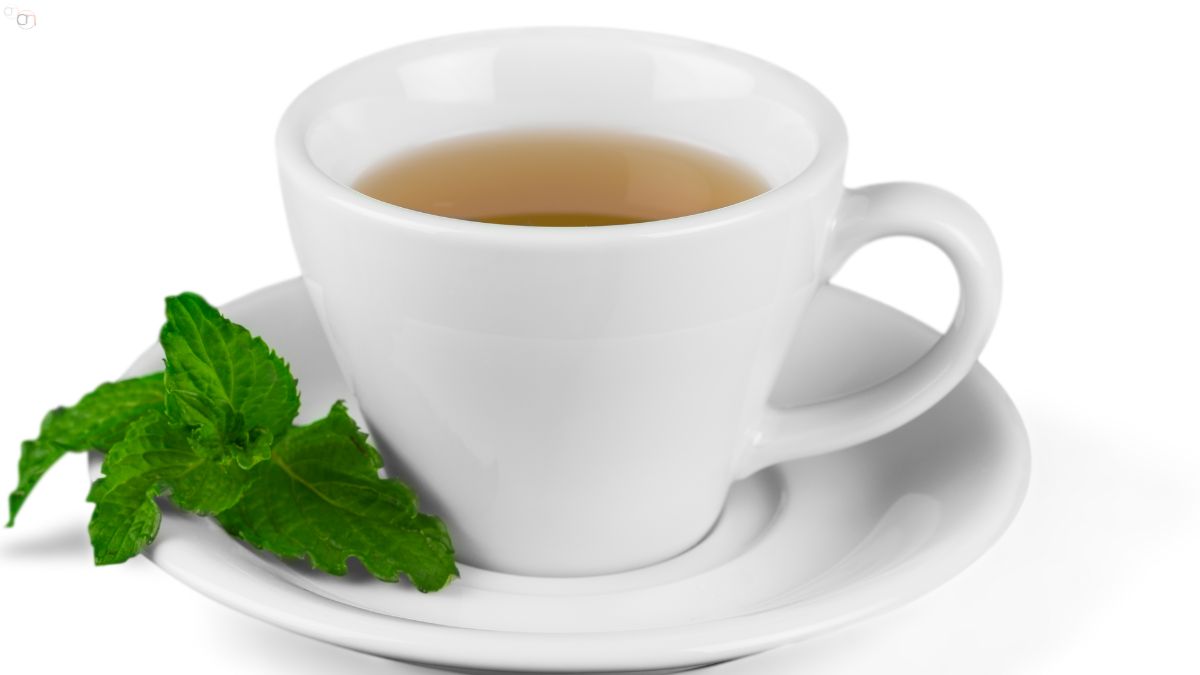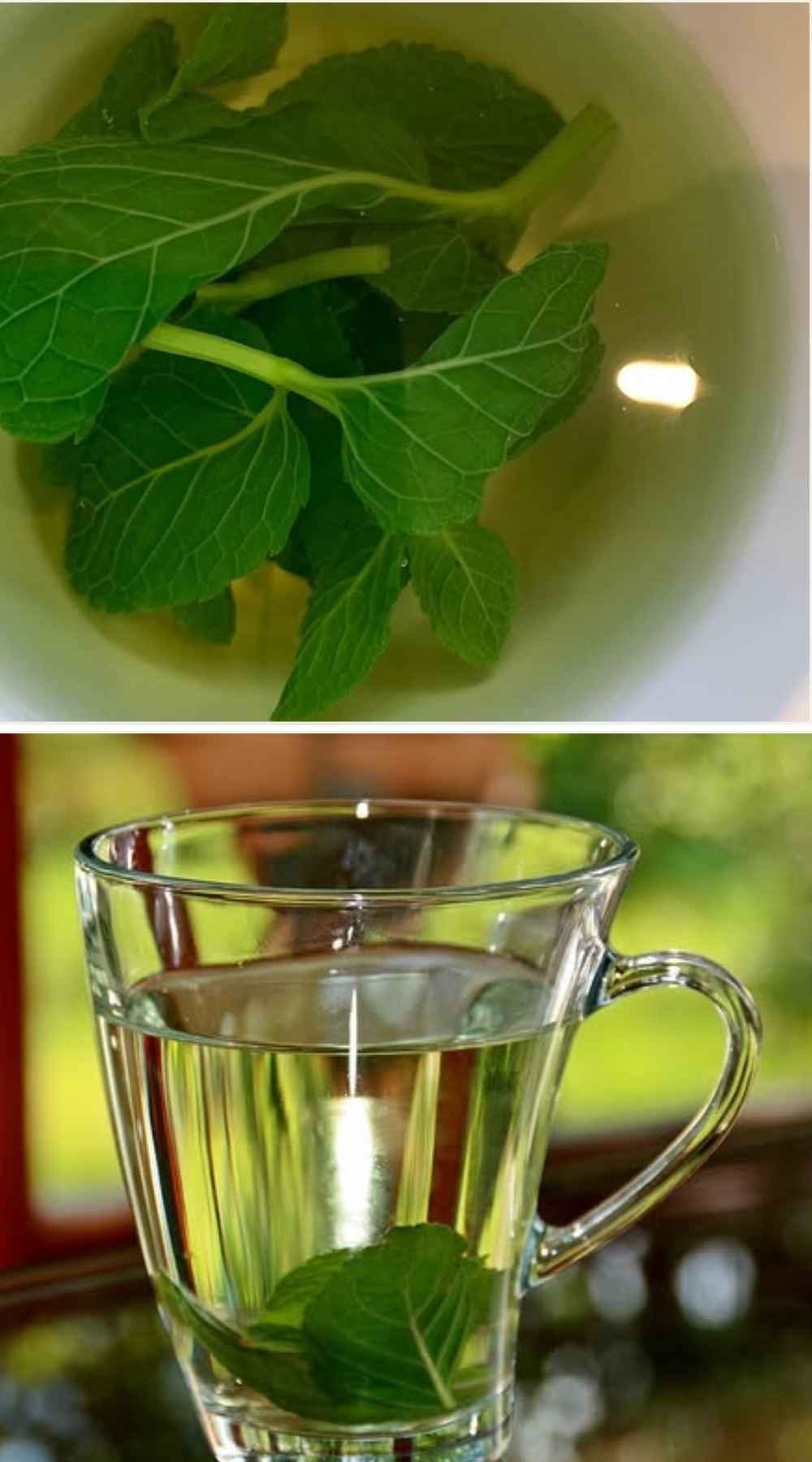There’s nothing quite as refreshing and soothing as a cup of mint tea made from fresh leaves.
If you’re looking to unwind after a long day or soothe your digestion naturally, making mint tea at home is simple, aromatic, and incredibly satisfying. In this guide, you’ll learn How To Make Mint Tea With Fresh Leaves and brew fresh mint leaves to create the perfect cup — no tea bags required.
Health Benefits of Mint Tea:
Mint tea isn’t just refreshing—it also offers a variety of health benefits, making it a soothing and functional beverage. Whether sipped hot or cold, this herbal tea can naturally support your wellness in several ways:
1. Aids Digestion
Mint tea is well-known for its ability to soothe the stomach. It can help relieve bloating, gas, and indigestion by relaxing the muscles in your digestive tract.
2. Naturally Caffeine-Free
Since mint tea is made from fresh leaves and not actual tea leaves, it’s completely free of caffeine—making it a perfect choice for evenings or for those sensitive to stimulants.
3. Promotes Relaxation
The calming aroma and natural properties of mint can help reduce stress and anxiety, making mint tea an ideal beverage to unwind with.
4. May Relieve Headaches and Sinus Pressure
The menthol in mint leaves can act as a natural decongestant and muscle relaxant, which may ease headaches, migraines, or sinus pressure.
5. Freshens Breath
Mint has antibacterial properties and a naturally cooling effect, making mint tea a gentle way to refresh your breath throughout the day.
Types of Mint You Can Use:
Not all mint leaves are the same—and the type you choose can change the flavor and aroma of your tea. Here are a few popular varieties that work well for homemade mint tea:
1. Spearmint
-
Flavor: Mild, slightly sweet, and refreshing
-
Best For: Everyday tea, gentle digestion support, subtle flavor
-
Spearmint is the most commonly used variety for mint tea. It has lower menthol content than peppermint, making it a softer, more delicate choice.
2. Peppermint
-
Flavor: Strong, cool, and sharp
-
Best For: Clearing sinuses, stronger minty kick, headaches
-
With a higher menthol content, peppermint creates a more intense tea—great if you enjoy a bold, invigorating flavor.
3. Chocolate Mint
-
Flavor: Minty with subtle chocolate undertones
-
Best For: Dessert-style tea or pairing with cocoa and spices
-
A fun and flavorful twist on classic mint, chocolate mint adds a hint of sweetness and richness.
4. Apple Mint (Woolly Mint)
-
Flavor: Fruity and mildly minty
-
Best For: Iced tea or fruit-infused blends
-
This variety has fuzzy leaves and a light, sweet taste—perfect for refreshing summer drinks.
Each type of mint offers its own unique benefits and taste profile, so don’t hesitate to experiment to find your favorite.
How To Make Mint Tea With Fresh Leaves:
How To Make Mint Tea With Fresh Leaves — perfect for you:
Step 1: Gather Your Ingredients
-
Fresh mint leaves (10–15 leaves)
-
2 cups of water
-
Optional: lemon, honey, or ginger
Step 2: Wash and Prep the Mint
-
Rinse the mint leaves under cool water to remove dirt.
-
Gently pat dry with a clean towel.
-
Lightly crush the leaves with your fingers to help release their natural oils.
Step 3: Boil the Water
-
Pour 2 cups of water into a pot or kettle.
-
Bring it to a boil, then let it sit for 30 seconds to slightly cool. (Very hot water can make mint taste bitter.)
Step 4: Steep the Mint
-
Place the crushed mint leaves in a teacup, mug, or teapot.
-
Pour the hot water over the leaves.
-
Cover and let steep for 5–10 minutes, depending on how strong you like it.
Step 5: Add Optional Flavors
-
Add a slice of lemon, a few slices of fresh ginger, or a spoonful of honey if desired.
-
Stir gently.
Step 6: Strain and Serve
-
Remove the mint leaves with a spoon or strain the tea into your cup.
-
Enjoy it hot—or let it cool and serve over ice for a refreshing iced mint tea.
Mint tea is versatile and can be enjoyed in several refreshing ways depending on the season or your mood:
Serving Options:
Hot Mint Tea
-
A soothing option for mornings or before bed.
-
Great with a splash of lemon or a drizzle of honey for added comfort.
Iced Mint Tea
-
Let the steeped tea cool, pour it over ice, and garnish with a mint sprig or citrus slice.
-
Perfect for warm weather or as a light, caffeine-free afternoon refreshment.
Herbal Tea Blends
-
Combine fresh mint with herbs like chamomile or lemon balm for a relaxing herbal mix.
-
Or add fresh ginger and lemon for a wellness-boosting infusion.
Tips for Best Results:
These simple tips can help you get the most flavor and benefits out of your fresh mint tea:
-
Use organic or homegrown mint for the cleanest, most aromatic experience.
-
Crush the leaves slightly before steeping to release essential oils and intensify flavor.
-
Avoid boiling the leaves directly in water—steep them instead to prevent bitterness.
-
Cover the tea while steeping to keep the steam (and flavor) in.
-
Steep longer for stronger flavor, but don’t exceed 10 minutes to avoid overpowering bitterness.
-
Serve immediately for the freshest taste—mint tea is best when it’s freshly brewed.
Key Take Away:
- Making mint tea with fresh leaves is a simple, soothing ritual that delivers both flavor and health benefits.
- With just a handful of ingredients and a few easy steps, you can enjoy a refreshing, caffeine-free drink that supports digestion, relaxation, and overall wellness—hot or iced, anytime of day.
FAQs:
Q1: Can I use dried mint instead of fresh mint?
Yes, but fresh mint offers a more vibrant flavor and aroma. Dried mint is convenient but may require less steeping time and results in a milder tea.
Q2: How long should I steep mint leaves?
Steep for 5 to 10 minutes. Longer steeping yields stronger flavor but can become bitter if overdone.
Q3: Can I drink mint tea every day?
Yes! Mint tea is gentle and caffeine-free, making it safe for daily enjoyment for most people.
Q4: What type of mint is best for tea?
Spearmint is mild and sweet, while peppermint is stronger and more intense. You can use either based on your taste preference.
Q5: How do I store fresh mint?
Wrap mint in a damp paper towel and keep it in the fridge, or store it like fresh flowers in a glass of water for up to a week.



